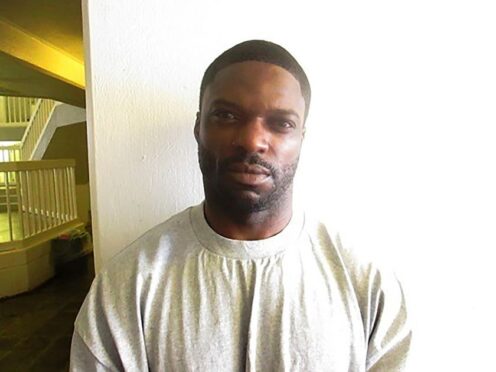
A man convicted of shooting and killing two people in Oklahoma City more than two decades ago was executed on Thursday morning.
Michael Dewayne Smith received a lethal injection at the Oklahoma State Penitentiary in McAlester and was pronounced dead at 10.20am, Oklahoma Department of Corrections spokesman Lance West said.
Smith, 41, was sentenced to die in the separate shooting deaths of Janet Moore, 41, and Sharath Pulluru, 22, in February 2002.
He is the first person executed in Oklahoma this year and the 12th put to death since the state resumed executions in 2021 following a nearly seven-year hiatus resulting from problems with executions in 2014 and 2015.
During a clemency hearing last month, Smith expressed his “deepest sorrows” to the victims’ families, but denied he was responsible.
“I didn’t commit these crimes.
“I didn’t kill these people,” Smith said, occasionally breaking into tears during his 15-minute address to the board, which denied him clemency in a 4-1 vote.
“I was high on drugs.
“I don’t even remember getting arrested.”
The US Supreme Court on Thursday morning denied a stay of execution requested by Smith’s lawyers, who argued that his confession to police was not sufficiently corroborated.
Prosecutors say Smith was a ruthless gang member who killed both victims in misguided acts of revenge and confessed his involvement in the killings to police and two other people.
They claim he killed Moore because he was looking for her son, who he mistakenly thought had told police about his whereabouts.
Later that day, prosecutors say Smith killed Pulluru, a convenience store clerk who Smith believed had disrespected his gang during an interview with a newspaper reporter.
Smith’s lawyer, Mark Henricksen, argued that Smith is intellectually disabled, a condition worsened by years of heavy drug use, and that his life should be spared and he should be allowed to spend the rest of it in prison.
Mr Henricksen said Smith was in a PCP-induced haze when he confessed to police and that key elements of his confession are not supported by facts.

Enjoy the convenience of having The Sunday Post delivered as a digital ePaper straight to your smartphone, tablet or computer.
Subscribe for only £5.49 a month and enjoy all the benefits of the printed paper as a digital replica.
Subscribe